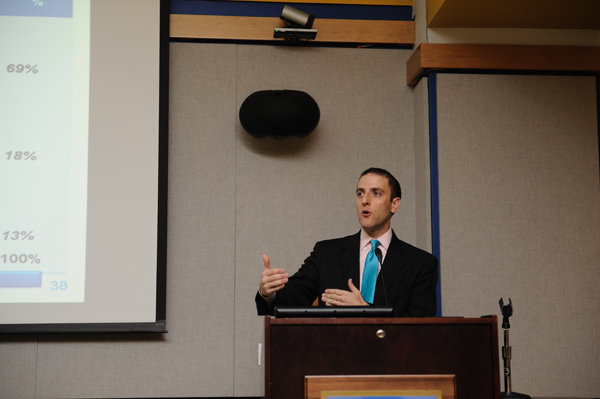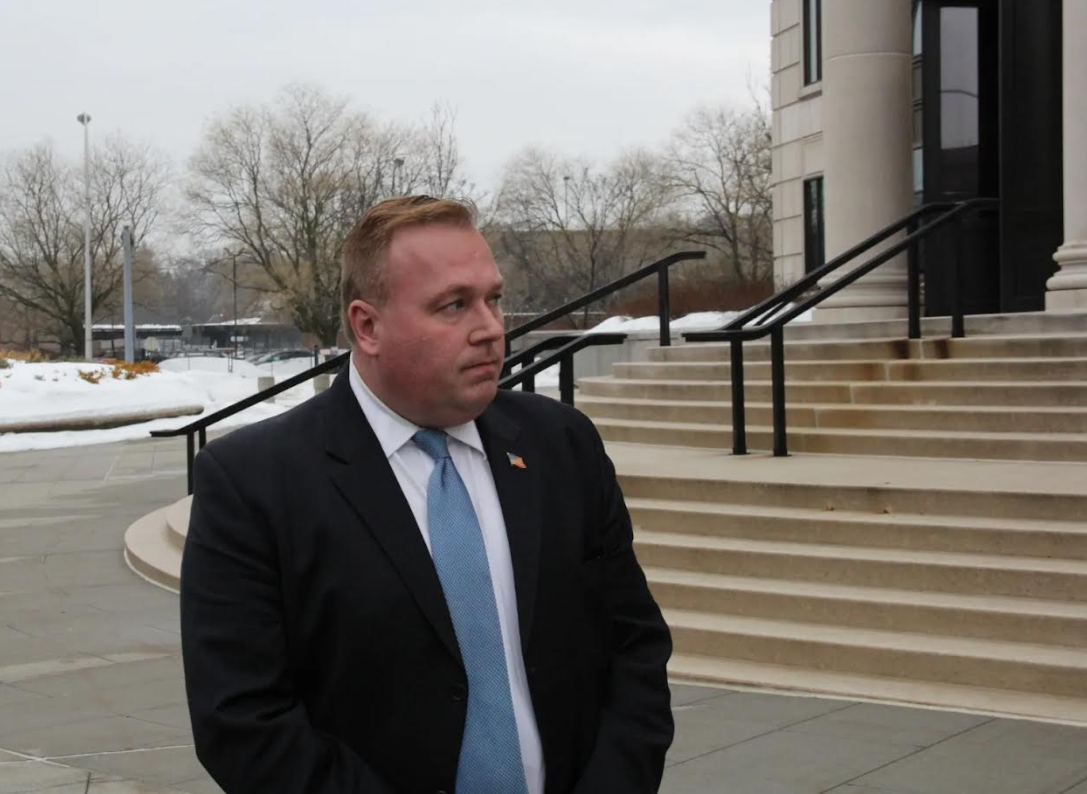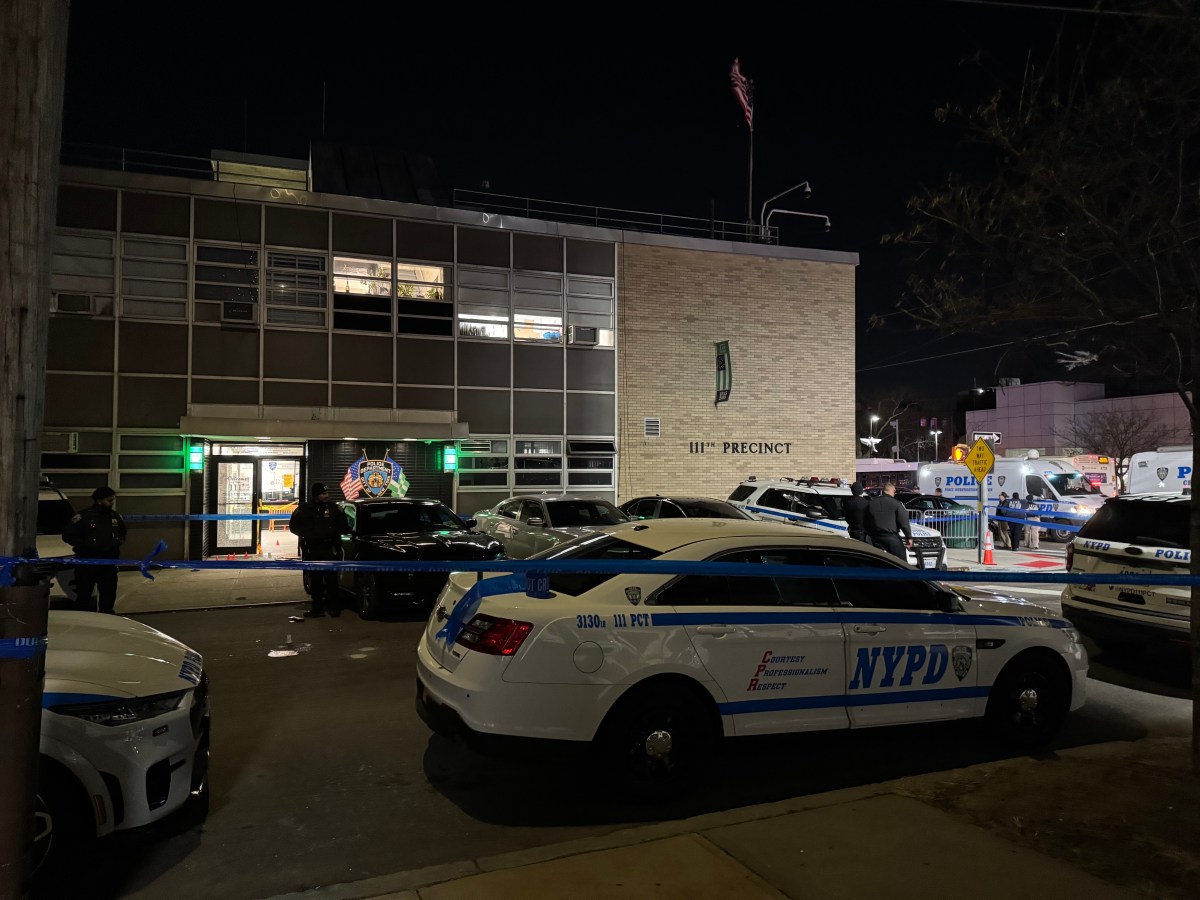
Seth Pinsky, president of the Economic Development Corp.
BY TERESE LOEB KREUZER | “New York City has always been vulnerable to coastal flooding,” said Seth Pinsky, president of the New York City Economic Development Corporation (E.D.C.), “but what Sandy and the new flood maps from FEMA (the Federal Emergency Management Agency) show is that our vulnerability is actually greater than we had understood.
He was addressing the members of the Lower Manhattan Marketing Association on March 28, with information about what had caused Superstorm Sandy’s unprecedented destructiveness, what the future might hold given the probable impact of climate change, and what the city can do to rebuild in a safer way.
“We are not going to climate-proof New York City,” he said. “That would be impossible and it would be folly to claim that that is our goal. But, what we do believe, is that through a multi-layered approach, we can reduce the impact of climate change and we can ensure that where we do get impacted, we are able to bounce back faster.”
Pinsky’s exposition of the causes of Sandy’s destructiveness are largely known by now — the unhappy confluence of a wind field that extended 1,000 miles from the eye of the storm (compared with a wind field of 300 miles for Hurricane Katrina), the westward track that took Sandy inland instead of out to sea, the precise timing of the storm’s arrival in the city when tides were high in the ocean and pushing inland, and a change in wind direction at a critical juncture on the night of Oct. 29 that augmented the surge.
“Due to its idiosyncrasies, Sandy’s value as a predictor of the future is limited – though it again reminded New Yorkers that the city is vulnerable,” Pinsky said.
He noted that since 1851, only three hurricanes have made a direct hit on the New Jersey coast, much less New York City.
However, he said, even though Sandy is unlikely to be exactly repeated, policy makers need to think about hurricanes generally, “and not just about hurricanes but about climate change.”
He said that Mayor Bloomberg had created a special task force to study the issues raised by Sandy and that a report is due in May.
In the meantime, he provided a preview.
In 1983, FEMA drew up flood maps that put much of the city in the 100-year flood plain. This meant that in any given year, there would be a 1 percent chance of flooding in that area. The maps also showed a 500-year flood plain, with a .2 percent chance of flooding in any given year.
As mapped in 1983, the 100-year flood plain covered about 260,000 residents, 190,000 jobs, 36,000 buildings and 374 million square feet of floor area. “All very scary,” said Pinsky, “but as we learned from Hurricane Sandy, [these maps] understated our vulnerability.”
When Sandy came ashore, more than half of all impacted buildings were outside the 100-year flood plain as designated by the FEMA maps.
Now, 447,000 residents are said to be living in the 100-year flood plain — a 72 percent increase. The number of jobs impacted by flooding has grown to 341,000 — a 79 percent increase. There are now said to be 71,000 buildings in the 100-year flood plain — a 97 percent increase. And the floor area covered by this flood plain has grown to an estimated 589 million square feet — a 57 percent increase.
Even so, Pinsky said the flood maps are incomplete. “They show us a historic set of data and Nor’easters that have hit the New York City area since 1938. They don’t take into account things like sea level rise or the future intensity of storms.
“The flood maps also don’t show us things like what happens when you have frequent downpours, which have an impact on our reservoirs and water supply, which have an impact on our infrastructure. They don’t talk about things like heat waves, which actually kill more people in the United States each year than any other natural phenomenon.”
In August 2007, for instance, almost 3.5 inches of rain fell in an hour, overwhelming the transit system and affecting nearly 2.5 million riders by mid-morning.
Mayor Bloomberg has enlisted a group of academicians to serve on the New York City Panel on Climate Change. They have been tasked with helping to quantify the climate change problem and recommend ways of addressing it. The institutions represented on this panel include Columbia University, CUNY, NASA, Princeton University and SUNY.
In 2009, the New York City Panel on Climate Change developed a chart showing what its members thought would be the impact of climate change in the medium term — the 2020s — and in the long term, the 2050s.
For storm surges, their baseline of data from 1971 to 2000 predicted a 1 percent chance of a storm surge of eight to 13 feet. Looking forward, they predicted that it would be safe to assume present conditions and add sea level rise.
For heavy downpours, their baseline data indicated that three days a year there would be more than two inches of precipitation. In the medium and long term, they predicted that this would happen three to four days a year.
They expected sea levels to rise by two to five inches by the 2020s, unless there were rapid ice melt in Greenland and Antarctica, in which case, the sea levels could rise five to 10 inches.
In the medium term, they expected that we could see a precipitation increase of 0 to 5 percent, and 0 to 10 percent in the long term.
“We have asked the New York City Panel on Climate Change to update those figures,” said Pinsky, “and while we are still waiting for the results of that update, what I can tell you is their feeling is that generally the projections are accurate.”
He also said that the city is working with McKinsey and SwissRe to quantify the cost that climate change is likely to impose on the city in the future. Preliminary results show that there will be a substantial cost to the city if nothing is done to mitigate the potential impacts of extreme weather events and other climate-related changes.
“The bottom line for us as New Yorkers is that we have to start taking steps immediately to address these long-term challenges,” Pinsky said.
































